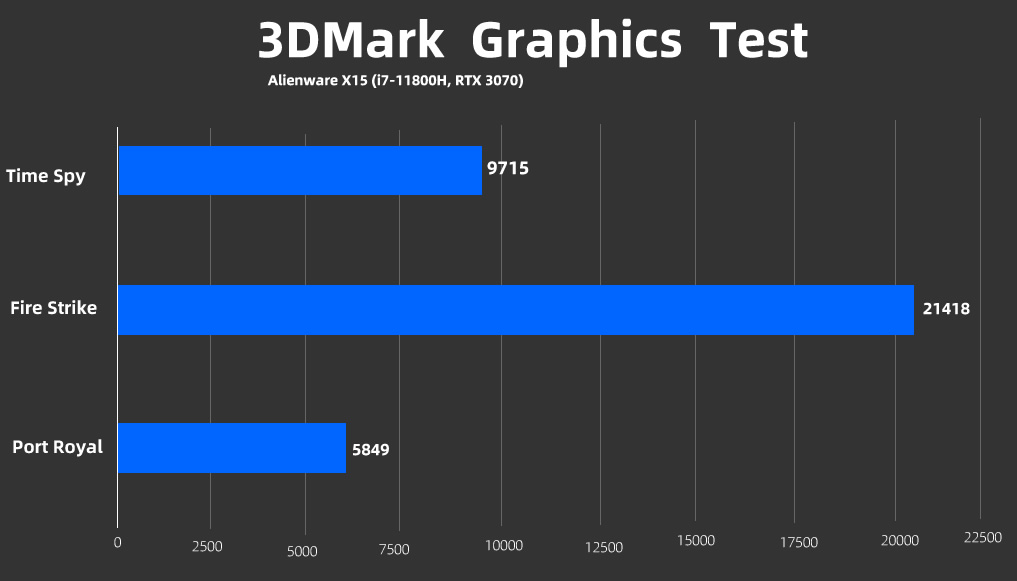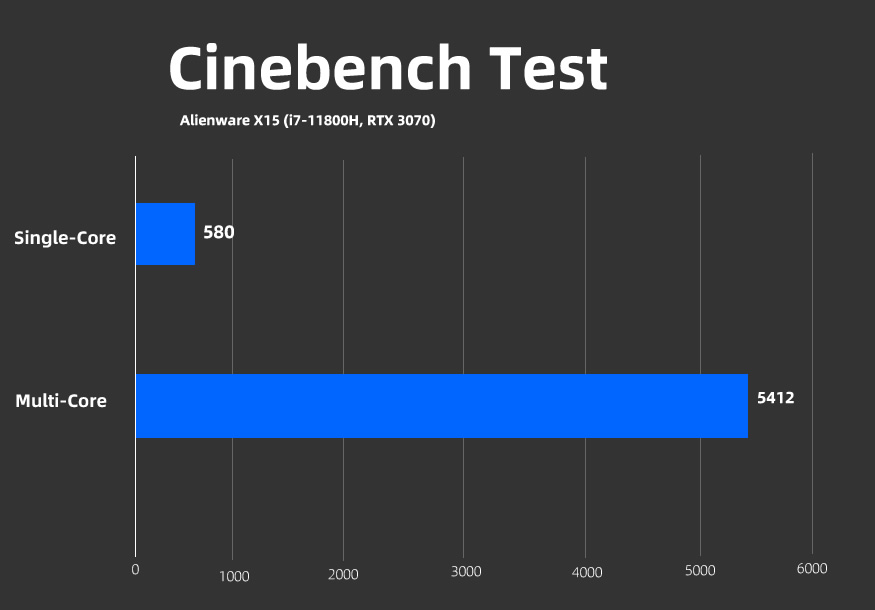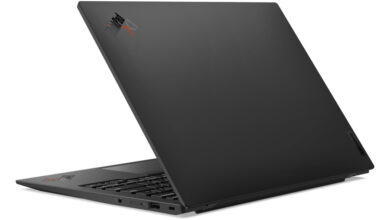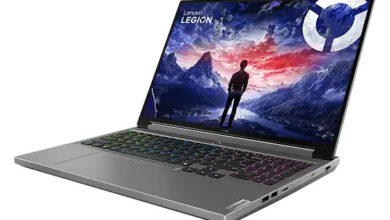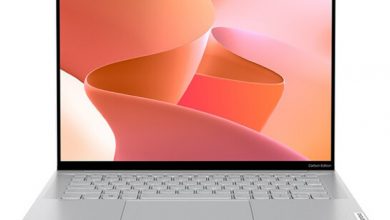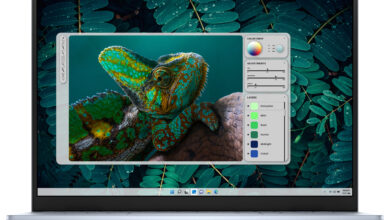In June 2021, Dell introduced the new 2021 models in its Alienware lineup. These models were named Alienware X15 and X17. They are the successors to the Alienware M15 and M17. Today, we decided to review the Alienware X15.
The Alienware X15 is positioned as a thin and light gaming laptop. It is now more optimized in terms of weight and volume compared to its predecessor.
The variant we have selected for review comes with the Core i7-11800H and RTX 3070, which is a popular choice among gamers today. We expect this gaming notebook to have breakthroughs in performance, display quality, battery life, and other related aspects, not just size and weight.
Alienware X15 Specifications
| Screen | 15.6-inch QHD (2560 × 1440) 16:9 Anti-Glare Display, 100% sRGB Color Gamut, 240Hz, 2ms, G-SYNC, Advanced Optimus |
| Processor | Intel® Core™ i7-11800H Processor 2.3 GHz (24M Cache, up to 4.6 GHz, 8 Cores) |
| Wireless Connection | Killer Wi-Fi 6E (AX1675 802.11ax 2×2) + Bluetooth 5.2 |
| Graphics card | NVIDIA® GeForce RTX™ 3070 (8GB GDDR6) |
| Memory | 32GB Dual Channel (2x16GB) DDR4-3200 MHz |
| Storage | 1TB M.2 Samsung PM9A1 PCIe NVMe SSD |
| Camera | 720p HD RGB Ir camera |
| Ports | 1x 3.5mm Headphone Audio Jack 1x HDMI 2.0 Video Output Port 1x USB 3.2 Type-A (Gen 1) 1x USB 3.2 Type-C (Gen 2) 1x TF card slot (microSD) 1x Thunderbolt™ 4 support DisplayPort™ / power delivery |
| Battery | 87W/Hrs, 6-cell Li-ion Battery |
| OS | Windows 10 Home |
| Weight | 2.36 kg |
Alienware X15 Review: Design, Appearance & Portability
We’ve already mentioned that the Alienware X15 has a slim and lightweight body. The body is made of magnesium alloy. The surface of the body is sprayed with white matte textured paint, which gives us a delicate touch. The perimeter is black to hide the port.
On the back cover of the display, we have an Alienware logo that supports RGB lighting. At the bottom, the number 15 is mentioned, representing the model X15.
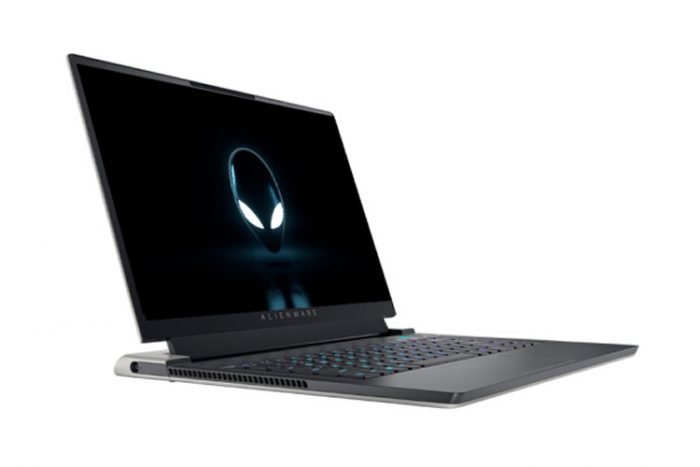
There are also ports and honeycomb vents on the back of the body. There are no ports or openings on the front of the body. The left side has a DC port and a heatsink opening. On the right side, there is a headphone jack and air vents.
The bottom surface of the Alienware X15 is designed with two through-the-wall non-slip rubber pads. It also retains the previous honeycomb design with symmetrical cooling and speaker openings on both sides.

The total dimensions of the Alienware X15 are about 359.7 x 277.3 x 16.3 mm. If you add the ground clearance, the total thickness is only 20 mm, which still looks relatively thin. The Alienware X15 weighs 2.36 kg, which should be lighter than other gaming laptops with a 17-inch display. Overall, we can conclude that this laptop excels in terms of portability, which is also an essential factor for a gaming laptop.
Alienware X15: Display
The Alienware X15 features a 15.6-inch display with narrow bezels. We also measured the thickness of the left and right sides of the bezel, and both were 7 mm. The top bezel of the display is about 9mm. It also comes with a webcam and a microphone.
It’s worth noting that the webcam is an HD RGB IR camera along with dual-array microphones. At the bottom bezel of the display, we find Alienware branding in silver. The maximum opening angle of the laptop is about 135 degrees.

This 15.6-inch display has a QHD (2560×1440p) resolution, a 240Hz refresh rate, and a 16:9 aspect ratio. It has a model number of LGD0690, which further indicates that LG produced the display.
We used Spyder X to test the screen. During testing, the brightness was set to 120 nits, and the color temperature was 6500K.
Some of the highlights in the results are as follows: the screen has a maximum brightness of 420 nits, while the factory color temperature is 6878K. The color gamut is 100% sRGB, 91% AdobeRGB, and 98% DCI-P3.
The measured tonal response and grayscale metrics are quite good. The display has a contrast ratio of up to 920:1. The brightness uniformity is good, with a maximum deviation of 8%. The overall color accuracy is also good, with an average Delta E of 1.30. It is worth mentioning that the screen has a good viewing angle, no visible color issues, but a slightly dimmed brightness.
Alienware X15: Keyboard and Mousepad
In the keyboard area, we have another air vent in the honeycomb design on top. Additionally, Alienware’s logo-shaped power button is also located in the heat dissipation area.
The Alienware X15 features the Alienware X-Series slim keyboard with one-key AlienFX lighting. It is a full-size, non-perforated full-key keyboard that further supports single-key AlienFX custom RGB backlighting. The overall feeling is good. Still, the keyboard lacks a numeric keypad, but that doesn’t matter for a gaming laptop. On the sides of the keyboard, we can also see the cooling holes.

Below the keyboard is an advanced precision glass touchpad (with multi-touch gestures and integrated scrolling) that provides a smooth experience during use. When measuring its dimensions, we found it to be about 105 mm wide. The usable area is slightly smaller (about 102 mm). There is an Intel sticker on the lower right side.
Alienware X15: Ports
The laptop has seven ports, five on the rear and two on the left and right sides.
The five ports on the back are as follows: a USB 3.2 Type-A Gen 1 port, a Thunderbolt 4 port, a MicroSD card slot, a USB 3.2 Type-C port, and an HDMI 2.1 video output port.
The DC charging port is located in the left corner, while the 3.5mm headphone jack is on the right side. It should be placed in the other corner, as it appears to be far away from the user. Otherwise, users will have to use long-wire headphones. One important feature missing from the Alienware X15 is the RJ45 port.
Alienware X15: Battery Life, RAM, SSD, Wi-Fi, and Audio
It comes with a 6-cell 87Wh Li-Ion (11.4V) battery with a total rated capacity of 7250mAh. The battery model number is DWVRR, the same model battery that has already been used in previous Dell laptops.
In the battery life test, we played an X265 encoded MKV video file using FurMark software (set to HD resolution) until the battery percentage dropped by 5%. The battery life for video playback is 4 hours and 3 minutes.
In the PCMark 8 Working Endurance Test, the battery life was 4 hours 20 minutes in a simulated working application.
It is worth mentioning that the battery has been certified by TUV Rheinland. In addition to the high-capacity battery, the laptop uses a powerful 240W AC adapter manufactured by Chicony Electronics.
The 240W charger is more rounded than the old one. Additionally, users can control the charging time, duration, start, and end times through Dell Power Manager.
The Alienware X15 comes with a Samsung PM9A1 1TB M.2 PCIe NVMe SSD. We further noticed during disassembly that the SSD is covered with a thick heatsink. This notebook also reserves an M.2 2280 slot but does not include a heat sink.
We tested its read and write performance using the AS SSD Benchmark. Its sequential read speed was 2,810.15 MB/s, and its sequential write speed was 1,519.21 MB/s.
In addition to the SSD, the notebook also comes with 32GB dual-channel (2 x 16GB) RAM with a maximum frequency of 3200MHz. The DRAM frequency is 799.7MHz.
The Alienware X15 comes with a Killer Wi-Fi 6E AX1675 network card. The maximum data transfer rate for this card is 2.4 Gbps.
Alienware X15: Cooling System, Stress Test, And Noise Test
The Alienware X15 comes with Element 31 (Gallium), the industry’s first and Alienware-exclusive encapsulated gallium-silicone thermal interface material for excellent heat dissipation. It offers a 25% improvement in thermal resistance and works more efficiently than previous heat dissipation solutions.
We also found that the Alienware X15 has four cooling fans under the honeycomb area at the bottom surface during disassembly. All four fans independently function to regulate and control the temperatures of the CPU and GPU. Moreover, each fan can independently spin up, slow down, or remain steady according to your system’s needs, prioritizing the movement of the fans positioned to enable the best benefit for your system.
We also ran a stress and noise test on the Alienware X15. The test was performed in a controlled environment at 20°C (±1°C). The standby temperature of the CPU is approximately 48 °C, while the standby temperature of the GPU is around 44 °C.
After the AIDA64 FPU (Non-AVX512) was fully loaded, the temperature reached 98 degrees Celsius, the frequency was reduced to 3.80 GHz, and the power consumption was limited to 81.26 W. The maximum release power of the CPU was 102W, while the average release was around 81W. The maximum temperature peak was 99 °C, and the average was 92 °C.
As you can see, the Alienware X15 is quite aggressive when it comes to CPU performance release, and guaranteed performance is always the first choice. The maximum temperature of the GPU after the entire load is 74 °C, while the frequency is reduced to 1050MHz.
After that, we also conducted a noise test and found that the noise value in standby mode was 38.5 dB. When we stress the CPU, the noise value reaches 49.7 dB, while on the GPU, the noise value reaches 50.6 dB. When the four fans are fully loaded, the noise reaches 54.7 dB, which seems quite loud.
Alienware X15: CPU And GPU
The Dell Alienware X15 comes with a Core i7-11800H CPU and an RTX 3070 GPU, which is one of the most popular combinations on the market today. The specifications of the CPU and GPU are discussed below:
The Core i7-11800H processor has eight cores and sixteen threads with 24MB of L3 cache memory. It has a single-core frequency of up to 4.6 GHz. This 11th-generation Intel CPU is built on the 10nm SuperFin process and is based on the Tiger Lake-H processor, which has been upgraded with a new microarchitectural design.
Then there’s the RTX 3070 GPU, which features 8GB of GDDR6 memory. The GPU has a base frequency of 1.5 GHz, which can be boosted up to 1.725 GHz.
It was time to benchmark the CPU and GPU (Core i7-11800H + RTX 3070). The benchmarks are as follows:
PCMark 8 Home Conventional 3.0: 4562 Points.
PCMark 8 Creative Conventional 3.0: 6652 Points.
PCMark 8 Work Conventional 3.0: 4195 Points.
3DMark Port Royal: 5849 Points.
3DMark Time Spy: 9715 Points.
3DMark Fire Strike: 21418 Points.
Cinebench R20: 5412cb Multi-core Score, 580cb Single-Core Score.
Summary:
According to the results, Alienware X15’s overall score is relatively fluctuating, with no significant flaws. In the same configuration of thin and light products, the screen and performance scores were quite good. However, it falls short in terms of battery life and temperature. Due to the aggressive performance release, there is no excellent outcome in noise control.


